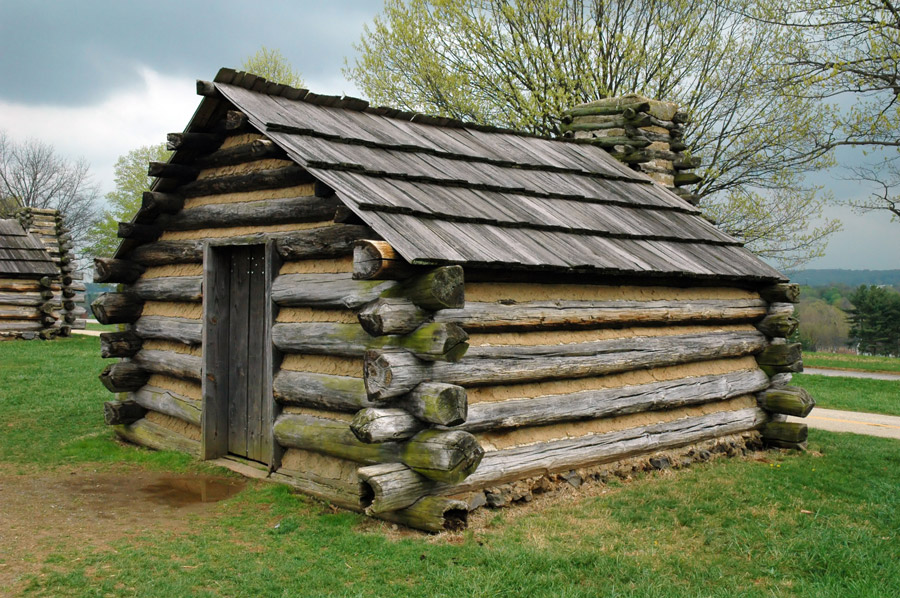
Even though building a log cabin is an exhausting activity that can be too frustrating to complete, its reward is impressive. Imagine living in a cozy house constructed by your own hand.
Also, It can be a wonderful alternative for your pre-made house or an ideal place for intimate meetings. This article will thus offer you a step-by-step instruction on how to build a firm log cabin.
What You Need?
First off, make sure the base is firm and level. For a log cabin, It is advised to have either a solid concrete base or concrete slabbing laid to the required dimensions of the building.
Also, there should be a gap of 2 feet left between the edge of the base and any surrounding walls, fences or other items. These gaps will ensure that there is enough clearance for constructing your log cabin and allowing you to treat the building afterward with a good quality wood preservative.
For the log cabin installation, you’re going to need:
- Rubber mallet
- Electric drill
- Hammer
- Step ladder
- Hand saw
- Spirit level
- Wrench
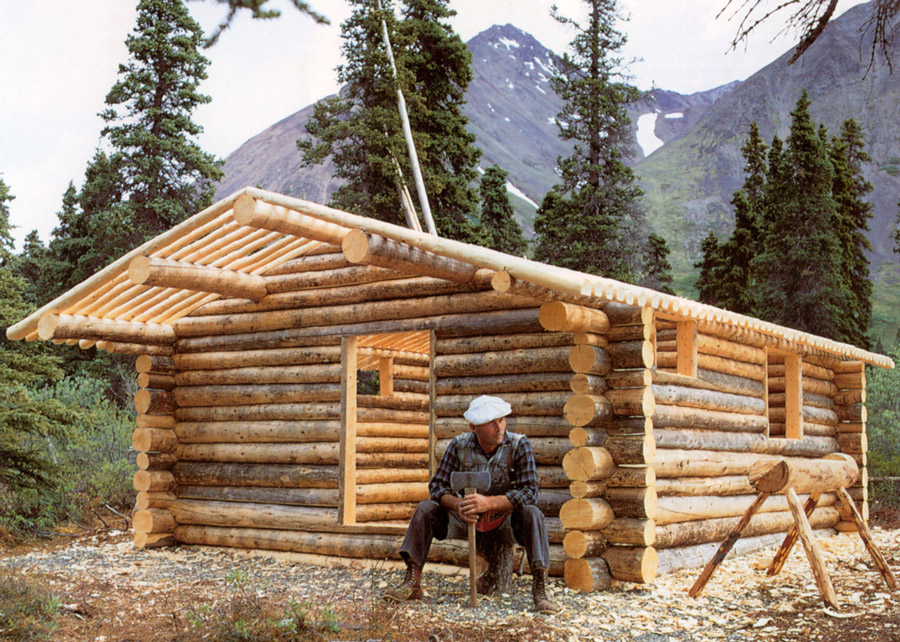
How to Build a Log Cabin
Base
First, lay out the floor bearers on your base and space them evenly apart. Then, lay down the base logs on the front and rear holders so that the cutout hangs over the edge. You need to screw these logs to your bearers, remembering to pre-drill all holes to prevent splitting.
Wall logs
Arrange your first logs in line at the corners. Use the rubber mallet to tap them together and prevent damage to the timber. Now that you have the basic frame, you can begin constructing the cabin walls.
Once you are three logs high, begin to insert the window logs on the left and right-hand side of the cabin. Keep building up the walls until they are around one-third of the window height.
Window kits
As you release the framing on the window kits with a screwdriver slightly, they can be slid neatly into position with ease and then can be tightened back up after.
Install all four window kits and re-tighten the bottom framing before starting on the walls again. The front corners are quick to build, simply slotting the log into the window frame and tapping together with the mallet.
Rear logs
The rear logs of the cabin can be installed alternating between the back and sides. You’ll find that they go up pretty quickly once you get going. Tap in the last log above the window frame to complete the surround.
The final logs of either side of the door frame can slide into place with little effort. Make sure to re-tighten all of the window framings to secure the kits in place.
Roof beams
The first roof beam is across cabin’s front, which allows you to install the apex pieces. These panels consist of several pre-assembled logs and have cutouts to allow you to install the roof beams with even spacing easily.
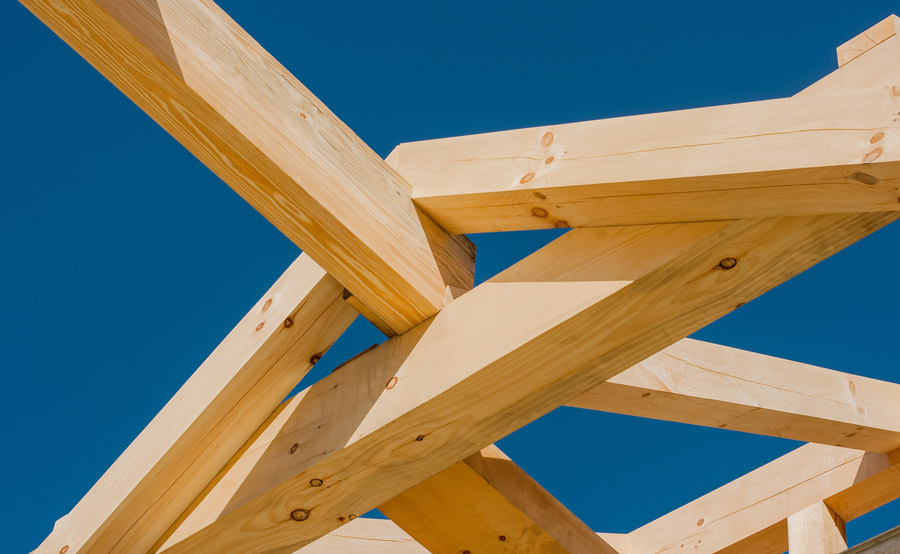
Before screwing them into the apex panel, and securing them in place, use the mallet to draw the left and right beams in place. Assure the screw head is flush with the log to prevent it snagging the next logs. The final apex pieces need to be drawn into place before the central roof beam can be connected.
Ensure to tap the sides of the log to keep it level and prevent it from sticking at the join. You will then need to screw down through the beam into the apex logs to secure it in place.
Door frame
To install the door frame, start by slotting the bottom framing over the foundation wood. You then need to remove the rear board from the top and side framing pieces so you can slot them in place, covering the side logs.
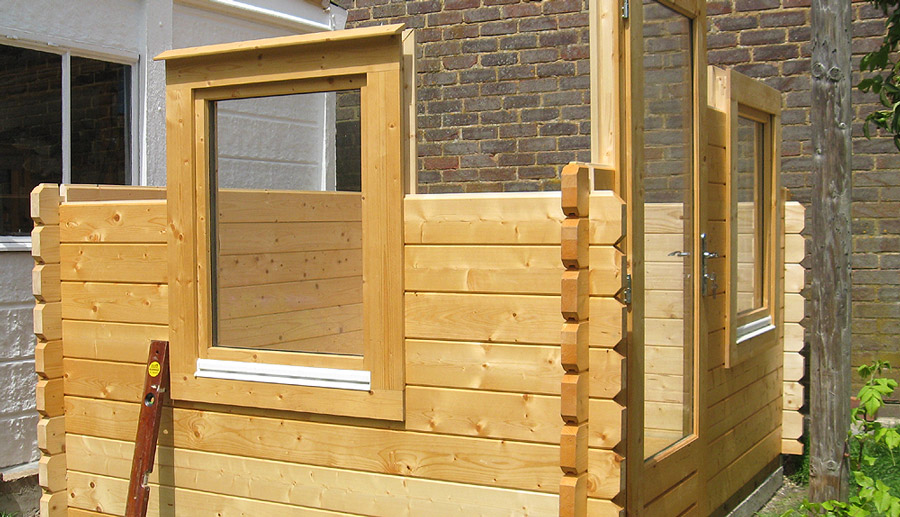
Once the framing is slotted into the doorway, replace the boards on the back of each piece and secure with screws. The next part to handle is the floor, but it’s straightforward once you get going.
Floor
Start at one end and arrange the boards up against the wall, perpendicular to the bearers beneath. The boards need to be settled with nails into the bearers below. Make sure that the boards are pushed tightly together to prevent any movement and fix them in place.
Once you reach the other end of the room, you may be left with a gap smaller than the width of your boards. This gap will require one to be cut down to size. Place a board within the gap and mark the ends so you know how much you’ll need to cut away.
Use an electric jigsaw or a hand saw to scrape the board to the correct size and place within the gap. You can knock the board into place to make it tight fit. Bind the last board with nails using the existing boards as a guide.
Roof
Your cabin is now starting to take shape; It’s time to start on the roof. Basically, the roof is similar to the floor. Begin at one end of the cabin then align your board up with the center of the apex. Ensure that the tongue of the board opposite to the cabin, so you have a flat face for felting.
Secure the board with nails into the side logs and roof beams. Repeat this across the length of the roof, ensuring that each board is flush at the end and locks securely into the previous board before nailing in place.
When you reach the end of the roof, you will be left with a gap, requiring you to cut down a board to fit in the same manner as the floor.
Mark out the required size and cut away the excess using a hand saw or electric jigsaw. Don’t mind the rough appearance, though; this will be covered by the felt and fascia boards. Do this step for the other side of the roof, ensure that the boards are flush at the end and nailed at the top, middle and bottom.
Roof trims
The roof trims need to be installed underneath the roof edge at the front and back of the cabin. These trims enable you to affix the roofing felt and install the fascia boards. These should be screwed in the middle and at both ends, making sure you pre-drill to prevent splitting.
Roofing felt
There are two ways to do this
- Measure the length of the roof with a tape measure then cut the felt accordingly
- Place the felt on the roof itself and rolling it out to the correct length. If you apply this way, tack down the end of the felt before rolling it out to prevent any movement.
Avoid pulling on the felt too much as it may tear. Always make sure to allow approximately 2 inches of overhang to enable you to tack the felt down easily and create a good water runoff.
Tack your first sheet down at approximately 6-inch intervals to ensure it is securely held to the roof. Repeat this for the second strip and allow the felt to overlap by at least 3 to 4 inches.
For this cabin, you need 5 lengths of feeling, two each side and one central capping strip. Once the felt is secure, chop down the center of the apex strip, which will allow you to fold it down for the front and rear fascia boards without creasing the felt.
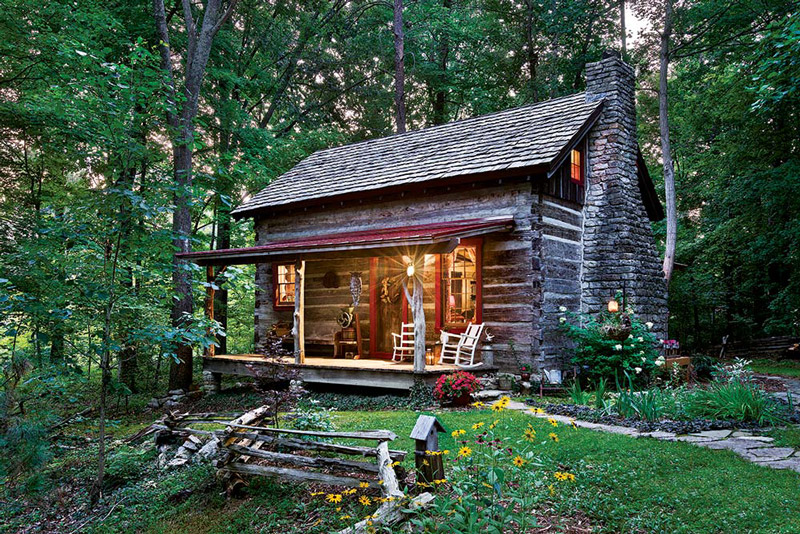
Fascia board
Use the fascia board to put pressure to the felt and slide it down to the side, preventing wrinkles. Remember to pre-drill your finials and fascia boards before screwing them to the cabin as this will prevent the wood from splitting.
Screw the fascia onto the ends of the roof beams on the center and ends of the board. Do this step for both sides. The front and back are installed in the same way, making sure that the felt is flat and securing the boards at the center of the fascia and each end.
Don’t worry if you have felt peaking out from under the fascias. It can simply be removed with a knife. Once the excess felt has been cut away, you can attach the finials to cover the fascia joint at the rear apex and the front.
Doors
Simply slotting the hinges down onto the frame. To install the lock, Put the tumbler into the opening and fix in place using a large screw into the front plate. It allows you to affix the front and rear faceplates to the lock before installing the handles.
The inside handle is settled and tightened by using a small allen key to preventing any movement. If the doors aren’t sitting properly, they can be adjusted with an allen key
Floor trims
Place the wider edge flush to the floor, go around the inside of the room, and nail in place in the middle and at both ends. You may need to cut down several pieces to get a snug fit but will leave the floor of your cabin with a professional finish.
When installing the storm bracing, you’ll need to affix them to the top log board and run them down on both sides. To begin, line up the bracing and drilling through the cabin wall to insert the bolt. Hand-tighten the nut while you align the bottom of the bracing, use a spirit level to make sure it is level. As soon as the bracing is secure, tighten both bolts with a wrench.
Repeat this for all four bracing strips. The final thing for your cabin is some small door bolts. Line the top bolts up with the framing hole on the left-hand door and lock the bolt to keep it nicely aligned. Screw in and repeat at the bottom. And that’s it! Your cabin is complete!
Conclusion
Above is the full instruction on how to build cabin log. Remember that the key to building a cabin log is not about skills or experiences, it’s all about how patient and elaborate are you in trying to make it complete.
Though log cabin construction is not a really easy task, as long as you find the interest in it, the results are very rewarding. Hope this article will somehow inspire you to build a cabin log of your own.
Nice meme.